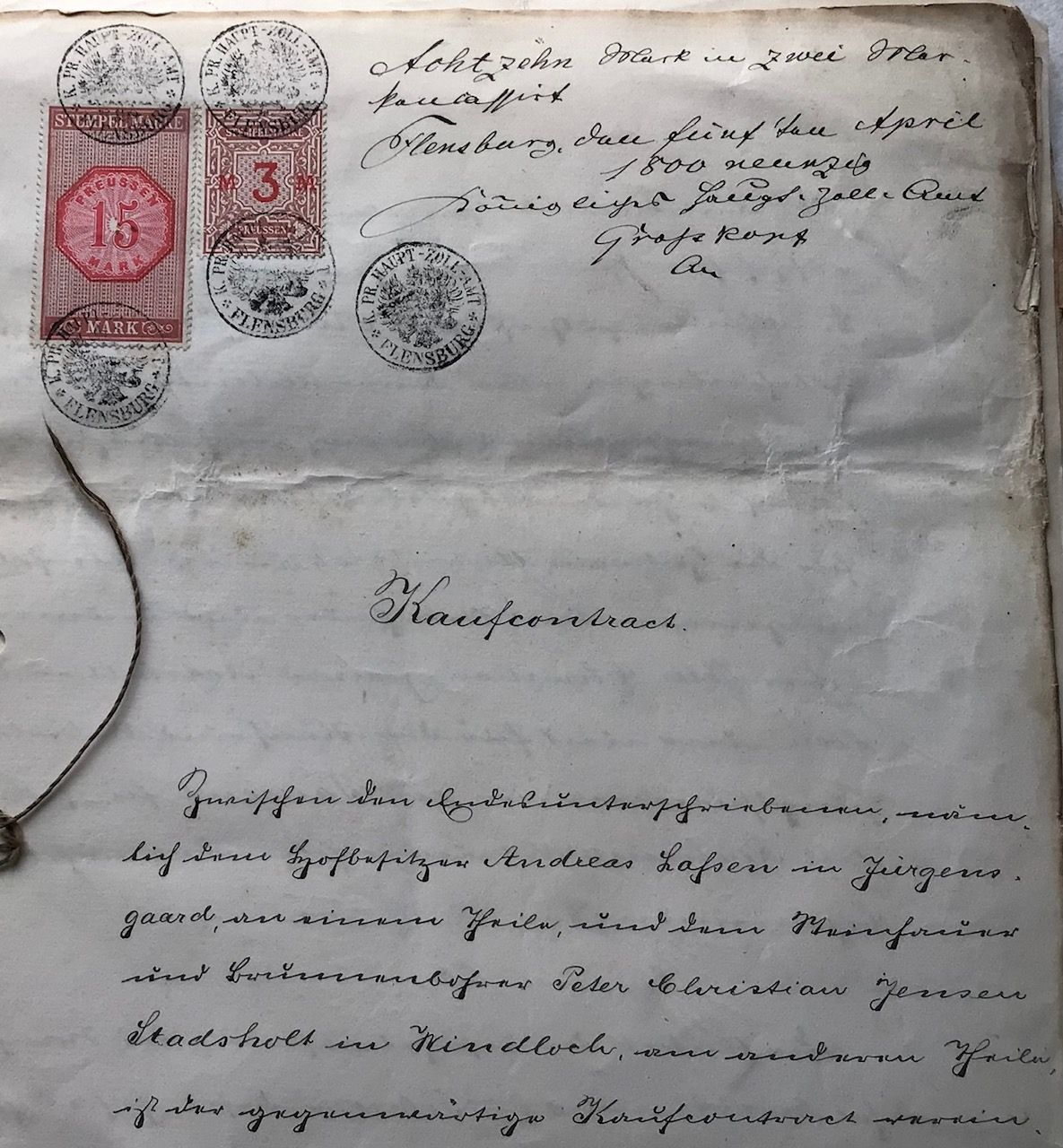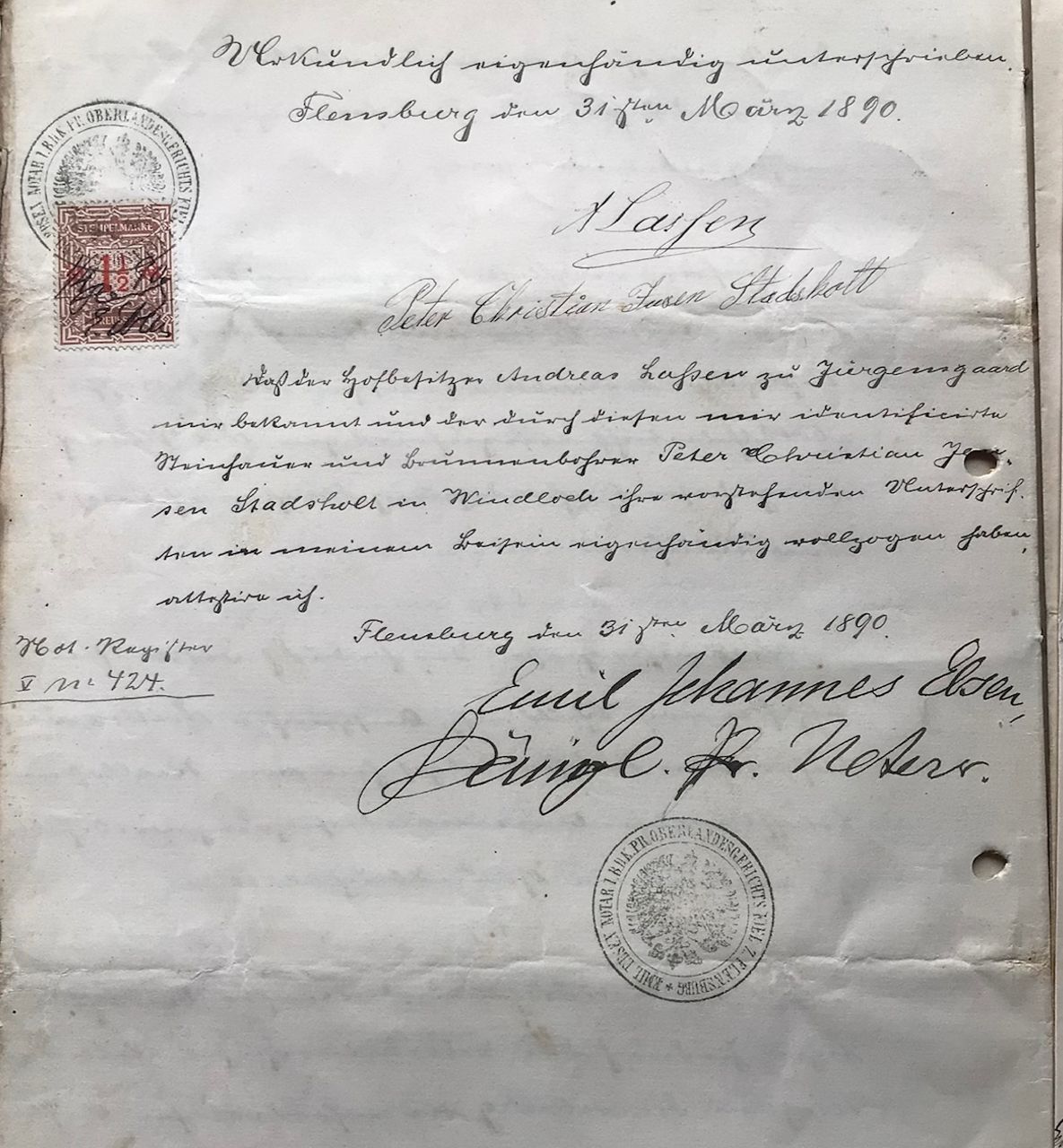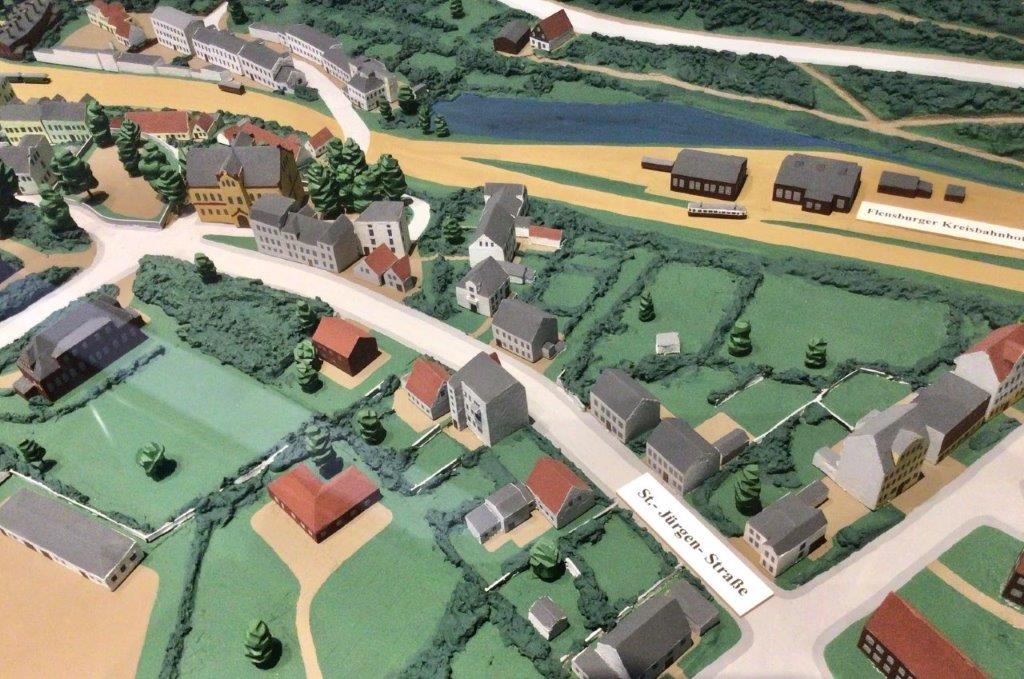Verein zur Erhaltung der östlichen Altstadt St. Jürgen / St. Johannis e.V.



- Historic townhouses at St.-Jürgen-Strasse 107 to 115 -
Flensburg was also a growing city at the end of the 19th century. When the three residential buildings at St.-Jürgen-Straße 107, 111 and 115 were built in 1890, they still belonged to the independent rural community of Jürgensgaard. Since the Prussian era, more and more villas and apartment buildings have been built here alongside the farmsteads. In 1900, Jürgensgaard was incorporated into Flensburg, like St. Jürgen before it.

![]()

- Purchase contract from 1890 -
The new buildings with their two- and three-room apartments shaped the image of the upper St.-Jürgen-Strasse at the time. The St.-Jürgen-Kirche, which dominates the village today, was built later between 1903 and 1907. House No. 107 is known to have been built by the bricklayer Julius Jensen, and No. 115 by the building contractor Staats und Jensen. At that time, the builders created buildings with a uniform architectural language that can still be read today. The plastered buildings with pitched roofs and late classicist facades emphasized horizontally by cornices have evenly rowed windows with simple entablature on the upper floors.

- City view from 1950 -
The photo shows a section of the city model and illustrates the urban development situation around the houses around 1950. The model can be seen in the civic hall of the town hall. The subsequent densification with apartment buildings has not yet started. Particularly striking is the stretch of Flensburg district railway north of the three houses. In the post-war period, the focus was increasingly on cars and the expansion of the road network. On March 31, 1953, the railway line was closed. A concrete road was built there, which was proudly celebrated as a technical achievement. On March 26, 1954, the white ribbon was cut and the line opened. But there were also critical voices: "Now he's gone, he misses him, the narrow-gauge railway," said a sign in "Petuh" that locals used to express their regret at the end of the railway connection.

The Flensburg Beautification Association awarded house no. 115 the award “Thanks to the citizens – beautiful house 1975” as part of a competition. The tile attached to the facade still commemorates this honor today. While many houses lost their historic windows in the 1970s, No. 115 retained them. In recent years, houses no. 107 and 111 have also regained their original window design, so that the ensemble is once again showing its full beauty. Until the year 2000, the back area of house 115 housed the workshop of a painting company. Like the other buildings, it is now used exclusively for residential purposes.